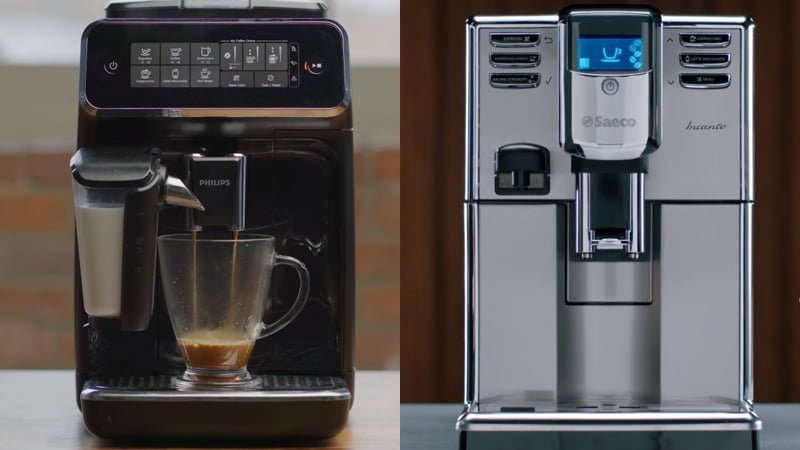Philips 3200 vs Saeco Incanto: Did you know they are made by the same company? Saeco and Philips are both owned by a Dutch multinational conglomerate named Koninklijke Philips N.V. They are generally designed so that you won’t have to run to your favorite coffee shop every day for a delicious caffeine drink.
The Saeco Incanto offers a more customizable coffee experience with a multitude of adjustable settings, making it an ideal pick for coffee lovers who are keen on investing additional time and effort into perfecting their brews.
The Philips 3200, on the other hand, is designed with simplicity and ease of use in mind, focusing on providing high-quality coffee with minimal effort. This compact machine comes with a limited set of features and settings, making it ideal for folks who want a hassle-free coffee experience at home.
Philips 3200 Vs Saeco Incanto: Comparison Chart




Last update on 2025-04-14 / Affiliate links / Images from Amazon Product Advertising API
Philips 3200 Vs Saeco Incanto: Differences
The Philips 3200 beat the Saeco Incanto with a tally of 4-3. Continue scrolling down and reading until the end to determine which machine best suits your needs.
Coffee Flavour
Winner: Tie
Built-in Grinder
Both the Philips 3200 vs Saeco Incanto use a built-in ceramic burr grinder. If you ask me, I’m always in favor of seeing this grinder type on super-automatic espresso machines. But let’s face it, a ceramic grinder is usually exclusive to machines in a higher price range and for justifiable reasons.
The ceramic blade grinder has a reputation for producing a consistent grind and running quieter than its stainless counterpart. It’s not really whisper-quiet, but its noise levels are pretty tolerable. If you stealthily prepare an espresso in the early morning, you could unintentionally disturb someone’s slumber. Nobody wants to start the day with glares from sleepy family members, do they?
In the realm of longevity, the ceramic grinder might not rival the durability of its stainless steel counterpart. Yet it’s robust enough to provide you with at least tens of thousands of delightful espressos.
Another thing that needs to be taken into account is the number of grind settings. A greater number of settings provides you with more room to play around and tailor the fineness or coarseness of your coffee to your liking. As a rule of thumb, extracting espresso shots necessitates a finer grind, while brewing a standard cup of coffee calls for a coarser grind.
The Saeco Incanto offers only 5 grind settings. Although this is below the industry standard of six, it is still quite acceptable, especially when considering its price point. Switching between these settings is a bit inconvenient. Rather than a straightforward knob rotation, Saeco opted for a slightly complex method that requires placing the dosing spoon onto a yellow tip to rotate it. This raises a potential problem – what if the spoon gets lost one day?
The Philips 3200, on the other hand, excels with 12 grind settings to fine-tune the size of the grind perfectly. Well, even the pricey Jura machines, at least the ones that I tested, don’t provide such a wide range of grind settings. To achieve finer coffee grounds, just turn a knob counterclockwise, and for coarser ones, do the opposite. Remember to adjust the grind size only while the grinder is operational, or it can get jammed. And as per the manufacturer’s advice, you should refrain from changing the grinder settings for the initial 100 to 150 cups.
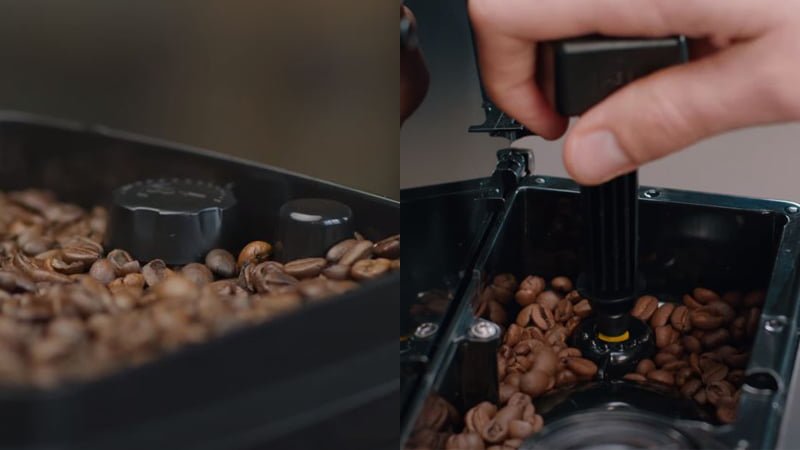
Heating System
The Saeco Incanto features a double boiler system, allowing for steaming milk and brewing coffee at once. This means no downtime for the machine to shift from one process to another. Even better, both boilers are aluminum-made and lined with stainless steel, incorporating Thermoblock technology for rapid heating in about 15 seconds. So if you’re in the market for a device capable of producing large volumes of beverages quickly, investing a little extra in such a machine is well worth it.
The Philips 3200 has only one boiler that can only perform one process at a time and requires an interval in between to heat the water to the right temperature. This one has a Thermoblock heating system as well, so you don’t have to wait too long for your favorite beverage.
The thing is, how does Thermoblock technology work? This one heats only the amount of water needed for brewing espresso or steaming milk. As a result, it not only minimizes downtime but also ensures your espresso is consistently brewed with fresh water, not stale or re-heated water.
Brewing System
Both the Philips 3200 vs Saeco Incanto coffee machines feature a pre-infusion process, which involves moistening the coffee grounds with water before extraction. This pre-infusion step allows for better flavor and aroma extraction from the coffee grounds, leading to a more balanced and flavorful espresso.
Another thing they have in common is a 15-bar pump. But what is this? Unlike drip coffee machines, these espresso machines rely on pressure for proper espresso extraction instead of primarily relying on gravity.
The term “bar” refers to the unit of pressure measurement used in these espresso machines, and one bar is equivalent to atmospheric pressure at sea level. It takes at least 8-9 bars of pressure to pull a great shot of espresso, and the pump on the Philips 3200 vs Saeco Incanto is rated at 15 bars, which is great
However, I noticed that the espresso from the Philips 3200 turned out somewhat weak, tending towards being watery and having insufficient crema. This can be traced back to its filter basket (which contains the coffee ground inside the machine), which has larger holes, resulting in water passing through too swiftly.
Fortunately, after some time scouring Google, I found three helpful tips for this:
- Opt for a finer grind setting: Select settings 3 or 4 for improved outcomes.
- Elevate the brew temperature: Select the high or maximum temperature setting.
- Increase the coffee strength: set the strength option higher than the coffee volume so that the ratio of coffee to water is higher and the flavor is bolder.
Milk Frothing System
Both the Philips 3200 vs Saeco Incanto boast an auto-frothing system instead of a steam wand. Individuals who are new to the world of espresso will certainly appreciate this system very much since it allows them to create creamy lattes and cappuccinos at rocket speed without any learning curve. It is also a game changer for those with a busy lifestyle since it saves them valuable time in the morning or whenever they need a quick pick-me-up.
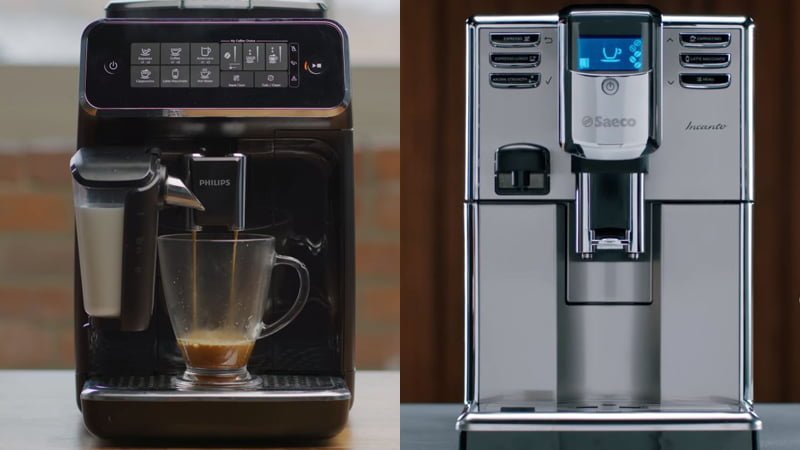
The Saeco Incanto’s well-designed milk system includes a durable plastic pitcher. Using it is as easy as pie: simply fill it with milk and slot it into the slot at the front of the machine. It’s safe for the dishwasher and can be stowed in the fridge during periods of non-use to keep any leftover milk fresh for a couple of days.
The delightful, smooth, and creamy milk foam from the Saeco Incanto truly amazed me. My only small gripe is the occurrence of some coarser bubbles atop the foam and the first few water droplets that exit from the dispensing spigot.
Likewise, the milk system on the Philips 3200, also called the LatteGo system, has three parts, including a clear milk carafe, a black holder, and a lid. Similarly, the milk system on the Philips 3200, also known as the LatteGo system, consists of three parts: a transparent milk carafe, a black holder, and a lid. I appreciate the absence of any tubes or hoses where milk can sit and turn sour and the holder’s notches that indicate the quantity of milk I should pour. Just ensure that the milk pitcher is securely fastened to prevent any untidy spills.
I found the Philips 3200’s LatteGo system only created very creamy and thick foam, no matter how much milk I used. This resulted in an excellent cappuccino, but it didn’t quite deliver when it came to making a latte. It would be better if this one provided the ability to customize the consistency of the microfoam.
Design & Usability
Winner: Philips 3200
Dimensions, Footprint, & Weight
| Philips 3200 | Saeco Incanto | |
|---|---|---|
| Dimensions | 9.7 x 14.6 x 17 inches | 12.3 x 19.5 x 20.6 inches |
| Weight | 17.7 lbs | 22.2 lbs |
The Saeco Incanto is a simple but classy machine. This one is primarily constructed from ABS plastic to keep costs low, but it doesn’t feel cheap or toy-like. The aluminum-made top and front face, combined with a stainless steel drip tray, bestow a feeling of value and endurance, setting it apart from numerous completely plastic models available on the market.
The Saeco Incanto is also a flashy espresso machine with a shiny black plastic casing and some chrome-like trims, contributing to an expensive feel without escalating the price. Of course, it would be better if it had an all-metal exterior, but this seems somewhat unrealistic given its current price range.
The Philips 3200 sports a relatively slim profile and will fit nicely on your kitchen countertop without occupying much space. This one is not too heavy either, so moving it is a breeze. Conversely, the Saeco Incanto, with its more sizable footprint and heftier weight, might pose some challenges when it comes to finding a suitable permanent place and maneuvering it around.
Pre-programmed Coffee Options
| Philips 3200 | Saeco Incanto |
|---|---|
| Espresso Black Coffee Americano Cappuccino Latte Macchiato Hot Water | Espresso Lungo Cappuccino Latte Macchiato Hot Water Steamed Milk or Foam |
Both the Philips 3200 vs Saeco Incanto include only six one-touch beverage options, which can be easily selected via buttons on the front panel. The hot water function essentially serves as a substitute for a traditional kettle. It is a useful addition and comes into play when there’s a need for tea or hot cocoa. Better yet, hot water doesn’t flow from the milk dispensing spout, meaning you’ll never have milk residue in your tea.
All of their preset drinks are programmable, so feel free to dabble in some experimentation to stumble upon a recipe that suits your taste buds. With the Philips 3200, you get three settings for coffee strength, brewing temperature, and the volume of coffee and milk. On the other hand, the Saeco Incanto allows you to tweak each of its pre-programmed options with five coffee strength levels and three brewing temperature levels, and its memo feature enables you to adjust the amount of coffee and milk according to your liking.
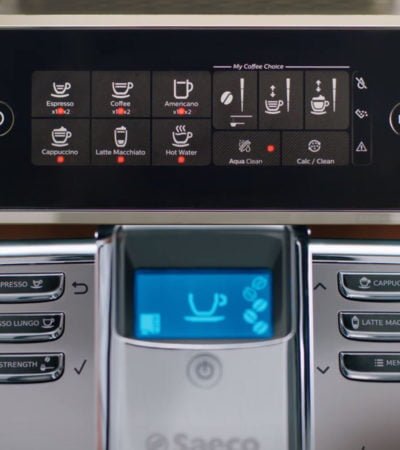
Apart from grinding the whole coffee beans, these machines also offer the option of using pre-ground coffee through a bypass doser or chute. This feature is a true lifesaver for those caffeine-sensitive members of your household or for those mornings when you are bereft of coffee beans.
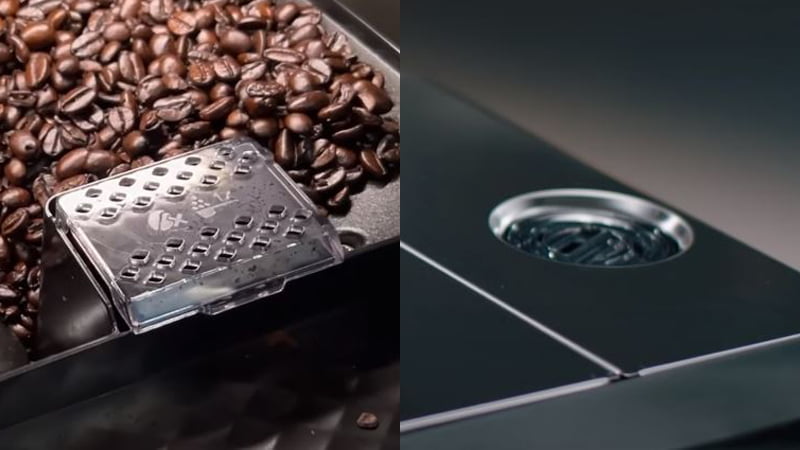
Spout & Cup Clearance
| Philips 3200 | Saeco Incanto | |
|---|---|---|
| Spout Type | Dual | Dual |
| Cup Clearance | 3.3 – 6.9 inches | 2.5 – 6 inches |
Both machines boast a dual dispensing coffee spigot that can effortlessly move up and down to fit cups of varying sizes. The Philips 3200’s spout can reach heights of nearly 7 inches, which enables it to fit even my most voluminous mugs. Conversely, the Saeco Incanto’s spigot can be adjusted to sit very low, preserving the visually pleasing crema on your espresso.
Of course, they can produce two cups of espresso at the same time – No more morning battles over the right to first use the espresso machine. Contrary to most machines within their price range, they genuinely brew two separate espressos instead of simply doubling the water amount for the same coffee – a fantastic feature! I do have a soft spot for models like the Jura Giga W3 that can prepare two milk-based drinks at once, and it’s understandable that’s a tall order for these mid-range machines.
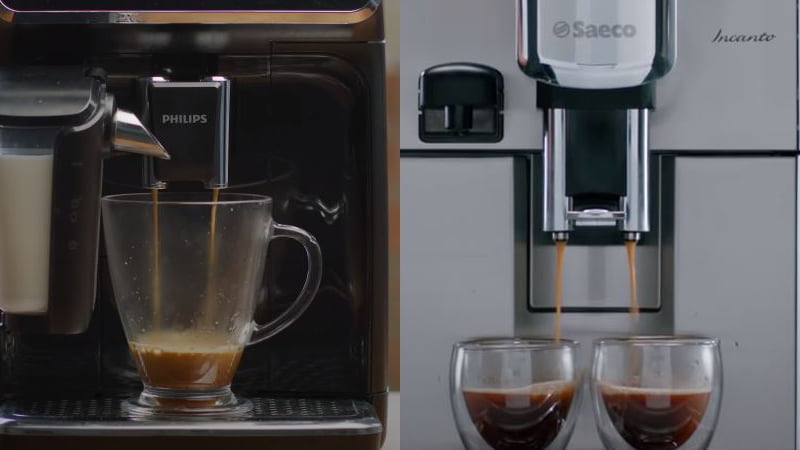
Bean Hopper & Water Reservoir
| Philips 3200 | Saeco Incanto | |
|---|---|---|
| Water Reservoir | 1.8 liter | 1.8 liter |
| Bean Hopper | 0.28 liter | 0.29 liter |
“How big is its water tank (or even bean hopper)?” This is, no doubt, among the most prevalent questions when mulling over an espresso machine. The refilling task, while not arduous or time-consuming, isn’t something one would fancy doing too frequently throughout the day, wouldn’t you concur?
The Philips 3200 vs Saeco Incanto come equipped with a 1.8-liter water tank, ample for either a lone coffee aficionado or a big family of casual sippers. However, if you are the kind of person who always has a cup in hand or if you intend to set up the machine in a busy space like an office, brace yourself for multiple visits to the kitchen sink. Oh, and their reservoirs are top-loading, which means you can refill them without taking them off.
Their water tanks are designed to house an AquaClean filter, which can remove both chemicals and minerals from the water, preventing your coffee from tasting bitter and stale. So unless you’re utilizing distilled water or you have a pre-existing filter installed at your sink tap, I’d suggest making use of it. One filter is included in the original package, and you may have to replace it every month. This causes a recurring fee, and considering it’s quite expensive, this will significantly increase your total cost of ownership over time.
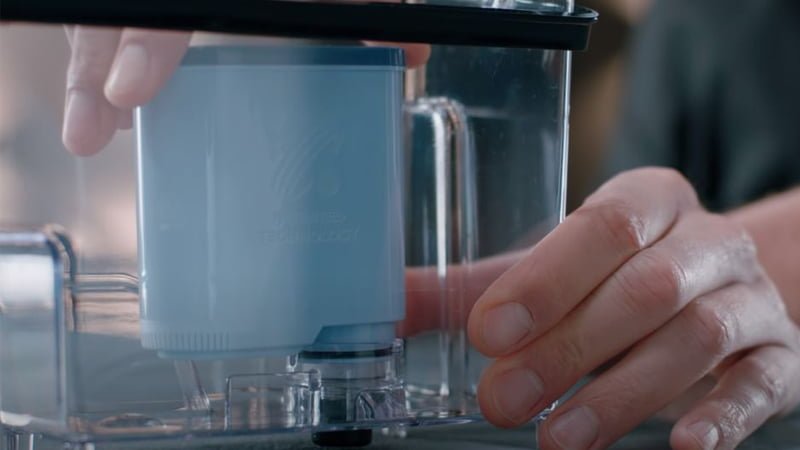
So is this worth it? In my opinion, yes, as what you’re essentially paying for is sparing yourself frequent descaling chores. With the AquaClean filter in use, Philips asserts that descaling would only be required after 5000 cups of coffee. Considering you make about four espressos per day, this translates to a descaling necessity only once every three and a half years.
The Philips 3200 vs Saeco Incanto are located at the top and can hold approximately a pound of coffee beans. Both come with a rubber seal designed to ward off air contact with the beans, preserving their rich aroma for extended periods.
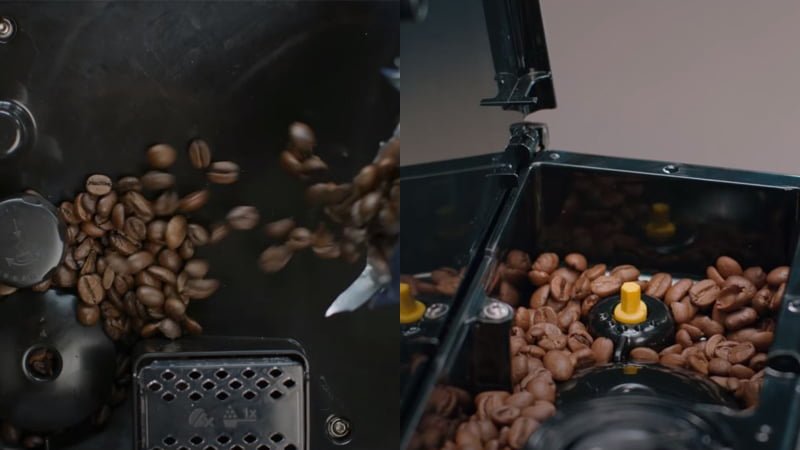
Cleaning & Maintenance
Winner: Tie
Like it or not, you’ll need to do some maintenance tasks to keep an espresso machine running well in the long run. The good news is that these tasks are far from a chore with the Philips 3200 vs Saeco Incanto.
Once you’ve prepared a milk-infused beverage, initiating a cleaning cycle helps avert any spoilage of milk in the tubes that transport it from the container, through the boiler, and finally to your cup. At day’s end, you should rinse their milk pitcher under the tap or in the dishwasher.
Other components, like the drip tray and the coffee grounds container, are also dishwasher-safe and need to be emptied on a daily basis. Their brew groups are detachable, which requires routine rinsing under the tap and periodic lubrication as well. For the exterior, a simple wipe with a damp cloth will suffice.
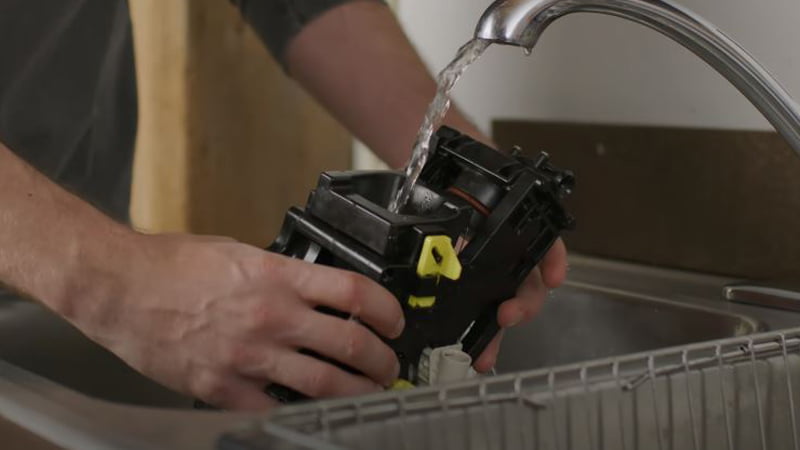
The machine’s descaling procedure is automated and necessitates the use of a Philips descaler. As pointed out earlier, the use of the filter will decrease the frequency of this undertaking.
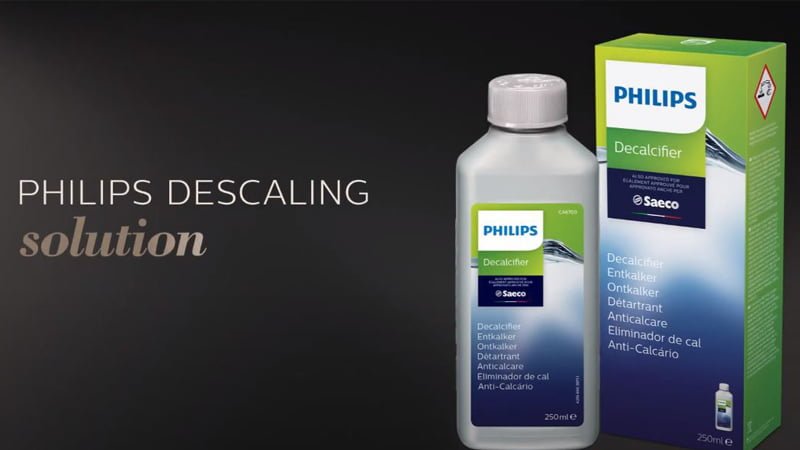
Utilities & Other Features
Winner: Tie
These machines don’t have any special features or fancy bells and whistles. They only have a “Stand-By” mode that, once activated, allows the coffee machine to remain powered on while functioning in a low-energy mode after a predetermined period (15, 30, 60, or 180 minutes), thereby conserving energy.
Quick Rundown Of Philips 3200
- 5 AROMATIC COFFEES: Enjoy your favorite coffees for special moments. Whether you crave an espresso, coffee, americano, cappuccino or a latte macchiato, your fully automatic espresso machine delivers a perfect in-cup result with no hassle and in no time.
- INTUITIVE TOUCH DISPLAY: The irresistible taste and aroma of coffee from fresh beans is just one touch away. Our intuitive touch display allows you to easily select your favorite coffee.
- PERFECT TEMPERATURE AND AROMA: The Aroma Extract system intelligently strikes the optimum balance between brewing temperature and aroma extraction.
- 2 PARTS, NO TUBES MILK SYSTEM: Our 2 parts milk system has no tubes or hidden parts and can be cleaned in as little as 15 seconds under tap or in the dishwasher.
- AQUACLEAN FILTER: By changing the filter after being prompted by the machine, you will not need to descale your machine for up to 5,000 cups, while enjoying clear and purified water.
Last update on 2025-04-14 / Affiliate links / Images from Amazon Product Advertising API
Quick Rundown Of Saeco Incanto
- The espresso machine's ceramic grinders deliver premium espresso coffee from fresh beans for 20,000 cups guaranteed
Last update on 2025-04-14 / Affiliate links / Images from Amazon Product Advertising API
Product Videos
Related Articles to Philips 3200
- Saeco Picobaristo Vs Philips 3200: A Detailed Face-Off Comparison
- Philips 3200 Vs Breville Barista Pro: An Honest Comparison
- Saeco Xelsis Vs Philips 3200: Choosing the Better One!
- Jura D6 vs Philips 3200: Can The Affordable Philips 3200 Beat The Mid-Range Jura D6?
- Jura E8 Vs Philips 3200: A Head-To-Head Comparison
- Jura E6 vs Philips 3200: Can Philips 3200 Surpass A Mid-range Machine Like E6?
- Jura A1 vs Philips 3200: Check Out My Honest Comparison For These Potent Espresso Machines
- Philips 3200 vs 3100: Reviewing 2 Cut-Price Espresso Machines
- Philips 3200 vs Terra Kaffe: Classic vs Contemporary – Which One Will Win?
- Philips 3200 vs 5000: Which Is The Best Espresso Machine For Your Budget?
- Philips 3200 vs Delonghi Magnifica XS: 4 Major Differences In Flavor, Milk Frothing, And More
- Philips 3200 Vs 5400: An Honest Comparison Between Two Machines With Various One-touch Beverages
- Philips 3200 LatteGo vs 4300: Which One Is Your Best Bet?
- Philips 3200 Vs 1200: Are They Value For Money?
- Breville Barista Touch Vs Philips 3200: Which One Is Your Best Choice?
- Breville Barista Express Vs Philips 3200: A Hands-On Comparison
- DeLonghi Dinamica Plus Vs Philips 3200 LatteGo: Honest Review & Detailed Comparison
Related Articles to Saeco Incanto
- Saeco Incanto vs Saeco Picobaristo: Honest Review With Complete Comparison
- Gaggia Anima Vs Saeco Incanto: An In-Depth Comparison
- Gaggia Anima Prestige vs Saeco Incanto: 2 Akin Models – Which Performs More Smoothly?
- Saeco Incanto vs Breville Barista Express: Is Super-automatic Machines Always Better Than Semi-automatics?
References:
- Philips 3200: https://www.philips.com.my/c-e/ho/coffee/philips-lattego-3200-series
- Saeco Incanto: https://www.usa.philips.com/c-p/HD8917_48/incanto-super-automatic-espresso-machine

I’m Floyd J. Alcock, an experienced barista with a deep love for coffee. I curate personalized coffee experiences, guiding customers through diverse flavor profiles and suggesting ideal brewing methods. My extensive knowledge of espresso machines enables me to recommend the best equipment to match specific needs and budgets. Sharing my expertise and passion with coffee enthusiasts brings immense satisfaction. I look forward to continuing my journey of coffee discovery with every customer I serve, fostering connections over a shared love for this magical beverage.
